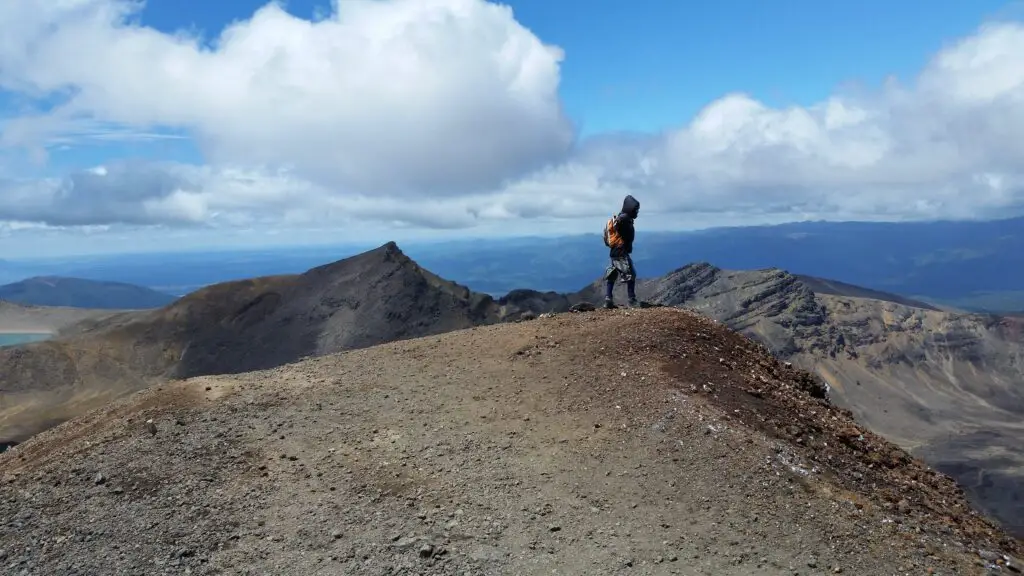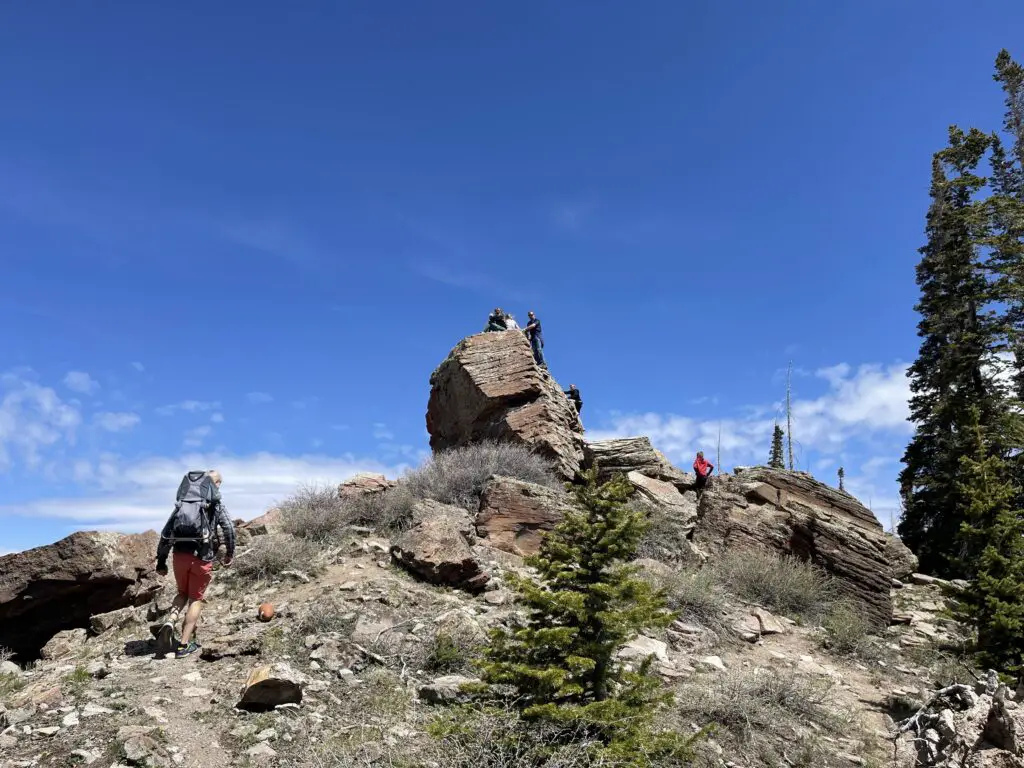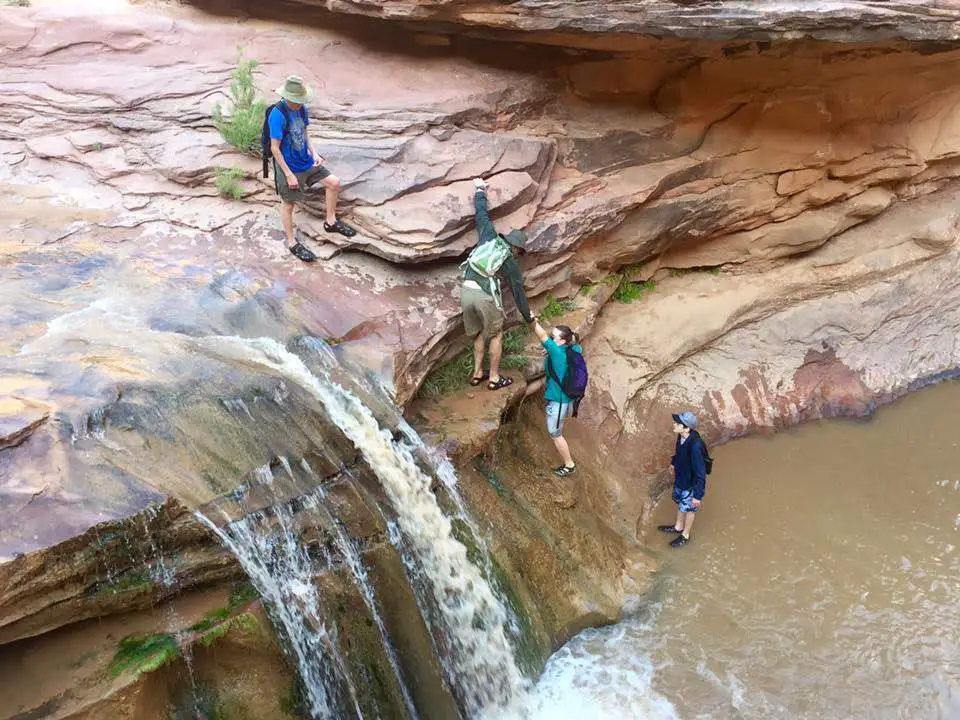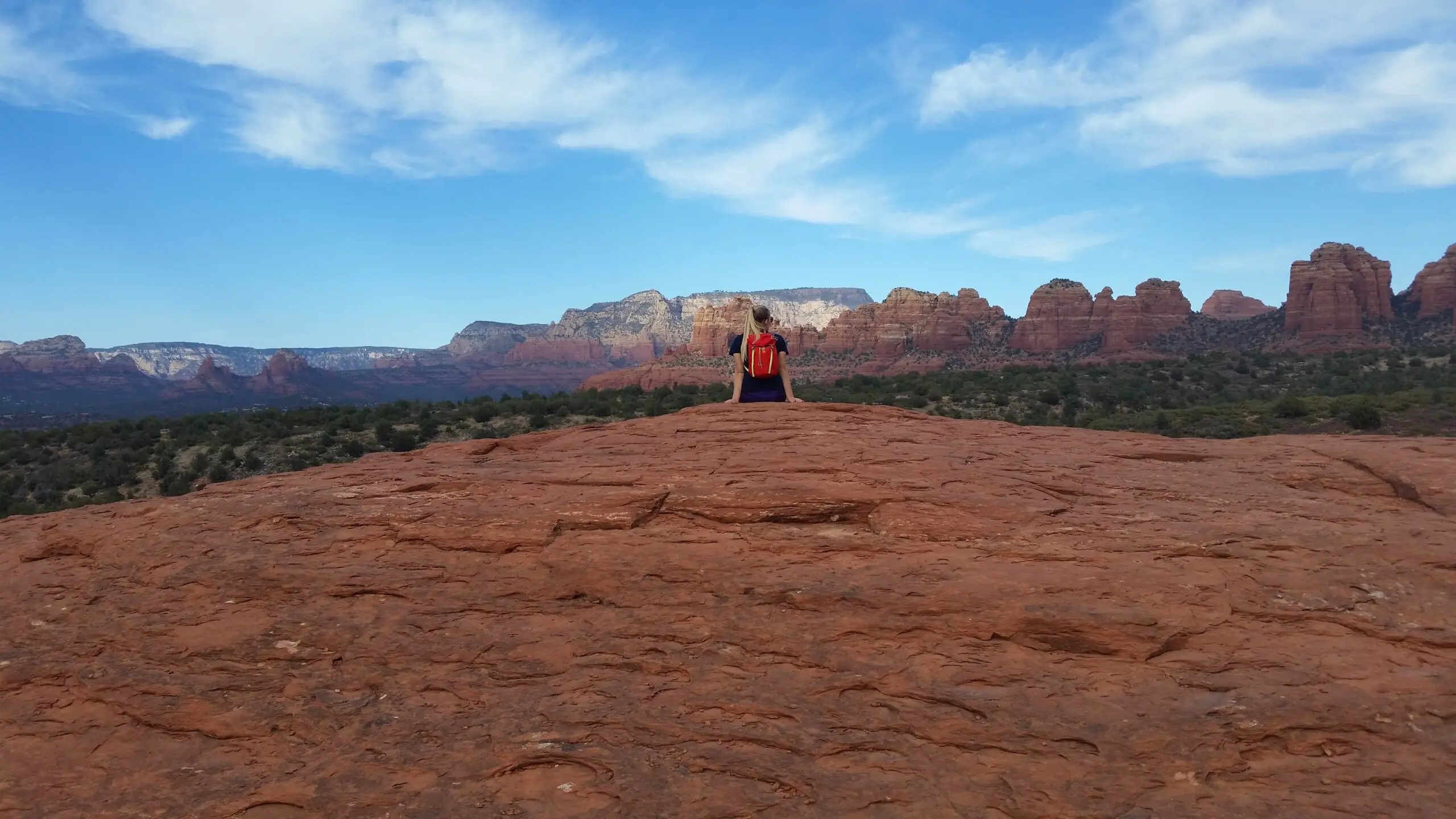In our modern sedentary lifestyle, it can be rare for people to get regular cardio. Many of us sit all day doing various office jobs or sit in class, barely moving every hour or two. When we finally break out on the weekends, it can be disappointing when our bodies can’t keep up with our minds. Activities like hiking can be very tiring!
The primary reason hiking is so tiring is that most people go hiking very infrequently and are not in shape for hiking. Hiking in the mountains can also be extra tiring because of the thinner air at higher altitudes. Hikers can also tire more quickly if they get low blood sugar by failing to replenish lost energy.
I’ll address each of these reasons hiking can be extra tiring, and provide some tips to not only reduce tiredness during a hike, but also recover more quickly after a hike.
Why Hiking Makes You So Tired
Fitness
Over the past few hundred years most people have changed their lifestyles from being agriculturally-focused to spending time doing something else. Many of us spend the vast majority of our days indoors, with the exception of commute time, recess, or the occasional sport or physical activity.
It’s become entirely common to drive to the gym for a workout, watch a Nature Documentary on Netflix rather than going outside to experience it, and to take the elevator instead of the stairs. There are certainly advantages to these developments, but the disadvantages shouldn’t be ignored either.
If the only cardio exercise you get is a run or a walk one or two days a week or less, you will probably have a hard time hiking long distances. Muscles naturally atrophy if they aren’t used. This includes our lungs, which is often the first thing to tire out on a hike.
Additionally, especially for those who live in cities, it can be difficult to find hills to run or walk on as training. You man run a lot on flat ground, but when it comes to hiking a mountain you’ll find that it uses a slightly different muscle set and your legs will wear out before your lungs do.

Altitude
Another factor that can really contribute to tiredness hiking is the elevation. If you’re hiking somewhere within an hour or a few thousand feet of where you live then you’ll probably be fine. You’re used to the oxygen level in the air and do well at it.
If, on the other hand, you travel to somewhere like Utah or Colorado from out of state, you might really struggle the first few days as your body acclimates . Air is thinner at high altitudes, meaning that there is less oxygen in each breath. Your body can adjust to that and make deal with it up to a certain level (higher than most people hike), but it will take some time to get used to the lower oxygen level.
. Air is thinner at high altitudes, meaning that there is less oxygen in each breath. Your body can adjust to that and make deal with it up to a certain level (higher than most people hike), but it will take some time to get used to the lower oxygen level.
If your hiking plans include jumping up more than a few thousand feet in elevation, plan on an extra few days to get used to the oxygen level before completing your hike. Otherwise you may experience dizziness or some forms of altitude sickness.
Energy
Another thing that can really trip up some hikers and bring on increased fatigue is that they don’t adequately fuel their bodies. As a general rule, if you exercise for 45 minutes or more, you need to eat something (source ).
).
The hour-after-hour slog hiking can catch you off guard. Normally we don’t eat every hour throughout the day, but normally we aren’t moving all day long. Your blood sugar will drop as you go, which converts to less energy for you to fuel your hike.
Make sure to eat something, even something small, at least every 45 minutes. For hiking that can mean things like beef jerky, trail mix, dried fruit, or even candy. I did the Grand Canyon Rim-River-Rim a few years ago and we got a lot of our energy from those little packets of drink mix that we would just dump in our mouths when we weren’t particularly hungry for food.
Ultra-marathon runners will often do it with packets of frosting to get quick sugars to keep their bodies moving. For hiking you probably want some protein as well to build muscle.
as well to build muscle.
Tips to Reduce Tiredness During a Hike
Don’t Overdo It
Unless you’ve been training your lungs and your legs, don’t just plan on hiking to the top of a mountain. Respect the distances and challenges in the outdoors, and start with something that you know you can complete.
Work your way up to longer hikes and make sure to pay attention to both the weather forecast and the elevation change of the hikes. The last thing you want is to run out of energy before you get back to your car and get yourself in trouble.
Pre-hydrate and Pre-fuel
Some hikers who normally skip breakfast at home make the mistake of thinking they’ll do the same thing when out on the trail. Your body needs food to convert into energy, so this is a bad idea.
If you eat something and make sure you’re hydrated before starting your hike then your body will be prepared to put in the miles. If you start out hydrated then you won’t need to carry quite as much water with you on your hike as well.
Pay attention to your thirst queues- if you feel thirsty, take a drink! Make sure you’re drinking frequently throughout your hike so that you don’t overheat. Even mild hydration problems will increase your level of tiredness and fatigue.
Get Enough Sleep
Whenever possible, prioritize getting enough sleep before going on a hike or participating in any type of athletic activity. A full night’s rest allows you to start fresh and will reduce the chance of injury or brain fog.
Try to get 7-9 hours of sleep before a big hike, and plan enough sleep into your schedule to recover afterwards as well.
Eat Before You Get Hungry
Food is energy. It takes a few minutes for your body to convert food into energy in your bloodstream, so the key is to eat before you feel hungry or faint. If you start to slow down because of a lack of energy, eat something and rest for a minute before starting out again.
Snack foods for hiking and exercise are all over the place. Ideally you want something that will provide quick energy and that isn’t very heavy. I’ve written an entire article recommending the best foods to give athletes quick energy .
.
Drink When You Get Thirsty
There are lots of guides that describe how much liquid you need to consume to stay hydrated, but the easiest way to manage it is to drink whenever you feel thirsty. Your body is pretty good at sending you signals.
On really strenuous hikes or activities though, you may be more focused on the burn in your legs than on the dryness of your throat. A hydration pack can be a great way to keep water in a place that you’ll remember to drink up.
Wear Comfortable, Supportive Shoes
The wrong kinds of shoes can utilize the wrong muscles in your feet and legs, and leave you feeling extra tired. Depending on the surface you’re hiking on, whether sand, rock, dirt, mud, or snow, you’ll want the right kind of shoes.
A lot of hikers have fairly recently left regular hiking boots for trail running shoes or approach shoes for hiking and climbing. Hiking boots are big, heavy, and clunky. Trail running shoes are light and still supportive. Approach shoes are even more supportive, and give the advantage of excellent traction for rocky areas.
for hiking and climbing. Hiking boots are big, heavy, and clunky. Trail running shoes are light and still supportive. Approach shoes are even more supportive, and give the advantage of excellent traction for rocky areas.
If you’ve got bad ankles, you’ll want to make sure to still go with a boot with ankle support, but otherwise I think trail shoes are a better choice. Always break them in before hiking though. There’s nothing worse than being stuck with an unbending stiff shoe through an overnight backpacking trip!
Cover Yourself Appropriately
Take a look at what instagramers wear on a hike, and then what desert-dwellers wear on their day-to-day. You might get more likes on your post wearing a crop top and short shorts, but you’ll also get a nice sunburn to go with it.
At higher elevations it takes a lot less time for the sun to burn you since the atmosphere is thinner. This means that you can lie out on a beach in California for quite a bit longer than you can lie out by a lake in Colorado before you get fried.
for the sun to burn you since the atmosphere is thinner. This means that you can lie out on a beach in California for quite a bit longer than you can lie out by a lake in Colorado before you get fried.
Wear clothing designed to protect you from the sun and the heat. A long-sleeved shirt or long pants don’t necessarily have to be warmer than shorts and a t-shirt. The right materials and cuts can do a lot to keep you cool. Avoid cotton in the outdoors because of the way it holds water and makes you cold if you get stuck overnight.
or long pants don’t necessarily have to be warmer than shorts and a t-shirt. The right materials and cuts can do a lot to keep you cool. Avoid cotton in the outdoors because of the way it holds water and makes you cold if you get stuck overnight.

Don’t Carry Too Much Weight
Although I’ve been known to backpack with a dutch oven, it’s not something that I recommend for most hikes or most people. Carrying extra weight in a backpack can really slow you down and wear you out.
The exact amount of weight you can carry really depends on your build and activity level. I remember as a teenager my 30lb backpacking pack was soul-crushing. Now a 30lb pack is nice (I usually carry my 35lb 4-year old and her snacks and toys).
Do you really need your DSLR or will your phone work just fine? Will there be water along the trail so you can just stop and filter whenever you need to instead of packing it with you? These are the kinds of questions you should ask before loading up.
whenever you need to instead of packing it with you? These are the kinds of questions you should ask before loading up.
Train Ahead of Time
Along with the question of how much weight to carry, think about how much extra weight you carry around every day on your body. I remember a story of a cyclist asking his coach if he should pay $10K to upgrade to a bike that weighs a little bit less. The coach looked at his gut and remarked that there are better ways to reduce weight.
Aside from just weight, you’ll also avoid early fatigue when hiking by training cardio and training your legs. Of course, one of the best ways to do this is to run frequently and to run up and down hills. When training for a longer hike, it makes sense to train while carrying a heavy pack.
I find that the best way to train for me is to train what gives out first. Sometimes that means I need to train cardio because I run out of breath before my legs tire. Other times I need to train my legs more because my lungs can handle it.
Maintain a Comfortable Pace
Trail running is obviously a different activity from hiking. Everybody seems to hike at a slightly different pace based on their height and natural gait. It can be difficult to keep up or can cause you increased fatigue if you hike with someone who goes a lot faster than you do.
If you’re hiking with someone who is faster than you are, consider shifting some of the contents of your packs around to slow them down and speed you up. Hiking usually isn’t about racing, it’s about enjoying time outside.
A good rule of thumb for your speed is to hike at a pace where you can breathe through your nose and carry on a conversation. It’ll be faster for some people than it will be for others, but that way you ensure that you aren’t going at a rate that isn’t maintainable.
Stretch Out
Before you get going it’s important to stretch. As you hike more often you’ll find out which muscles tend to get tight and sore afterwards, so you can focus your stretches.
The muscles that seem to get the most sore are hip flexors, quads, and glutes. Plan on 5-10 minutes of stretching as you start your hike, and stretch out again as needed on the trail.
Tips to Recover After a Hike
Re-fuel and Re-hydrate
It’s just as important to refuel your body after a challenging hike as it is to fuel it adequately during the hike. The post-workout fuel is what goes to build the muscles and replenish your energy stores, helping to speed up your recovery.
If you refuel with healthy foods including protein, your exercise will convert more easily into muscle than it would if you ate junk after a hike.
Stretch Out
Stretching is not only important before a hike, it’s also crucial after a hike to make sure your muscles don’t knot up. It can happen a lot where the first part of the hike is a lot of uphill, and the second half is all down. In this case you need to make sure to stretch out the uphill muscles as well as the downhill ones at the end.
Your calves can get really sore and knotted from hiking uphill, and your glutes from going downhill. Don’t forget to stretch your back as well, even if you aren’t carrying a pack.
Rest
Much of the stress your body goes through during a physical activity like hiking will dissipate during a good night’s rest. Get adequate sleep after a hike and take it easy until your body has recovered.

Related Questions
Why Do Hikers Get Fat? Many of the foods developed for hiking are energy and calorie dense in order to replenish energy lost with a smaller package and weight. Hiking does burn calories, but hiking snacks are also full of calories. If your intake is greater than your output, you’ll generally gain weight.
Does Hiking Get Easier? Fortunately, hiking gets easier with every step along the trail. The more a person hikes, they build and stabilize muscles that are necessary for the activity and get used to being outside. Training by walking or running on non-hike days can help hiking to become even easier.
Why is Hiking Difficult? Hiking is hard because it isn’t something that most of us do everyday. Hiking strains muscles that we may not use very often. It takes a lot of energy to lift a body and carry it over uneven terrain, but it gets easier the more you do it.

